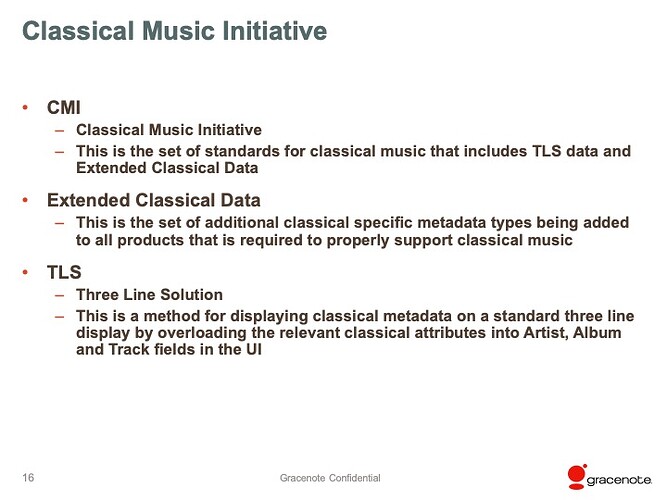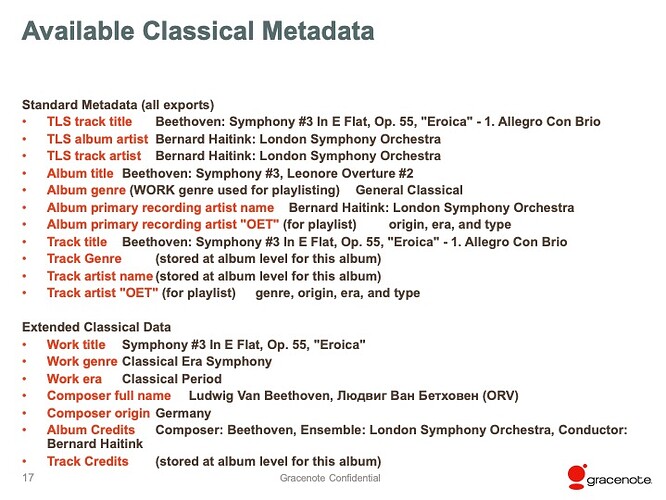as is apparent from my moniker, I work for a company that has been involved with music metadata for nearly 30 years. around 2004, the music critic and composer Greg Sandow wrote an article for the WSJ bemoaning the state of classical music metadata, and the effect this would have on the visibility of classical music in the digital domain.
Largely in response, Gracenote launched an internal project we called the Classical Music Initiative (CMI), which in 2005 resulted in a set of metadata standards called the Three Line Solution (TLS):
The centerpiece of the Classical Standard is the Three-Line Solution (TLS). The single most vexing problem in providing classical music data has been the equivalent of making a square set of data components fit into an existing triangular set of data fields (the pop paradigm mentioned above). To provide an informed listening experience for classical fans, a media player must list four basic data components: Composer, Recording Artist, Album Title and Track Title. At the moment, the vast majority of media players provide only three fields. The problem is complicated by the need to devise a system in which existing data is not corrupted and one that will be elastic enough in its design to accommodate future innovations in the form of tools, forms, programs and end products. TLS addresses all these and resolves them.
The concept of putting the composers name in the Album Name and Track Name fields, delineated by a colon, was part of the TLS standard. Gracenote provided these standards to the labels (and in many cases worked directly with the labels to define the standards), who in turn used them when they submitted recordings to digital services.
Roon does not use Gracenote metadata, but in time, this concept found its way into other databases via this submit process, so when you see an album in Roon such as Beethoven: Symphony #3 in E Flat, Op. 55, “Eroica”, that format originated with the Gracenote CMI.
But the CMI went much deeper:
and deeper still. There is a 20 page Classical Standards white paper that I won’t post here, from which the above quote is drawn, but would be happy to share via DM (it’s been made public elsewhere).
So if deep, rich, consistently formatted classical metadata standards have been available for nearly 20 years, why is most classical metadata still so poor? Because the labels, by and large, have not bothered to implement the standards many of them helped develop. A “media player,” such as Roon or Spotify, or Apple Music, can correct for some of this after the fact, but there is still the problem of correctly identifying a recording. Roon’s ability to identify classical recordings is…imprecise.
So we all develop hacks to navigate our own collections. @JOHN_COULSON’s is a good one, and I’ve read many others here. The Box Set problem is real, and something I know Roon has tried to address. Gracenote does not have a good solution for this either. But it’s not the only classical metadata problem that needs addressing.
…and don’t get me started on classical music and Roon Radio, which I’ve referred to elsewhere as the Mahler 3rd Problem.

